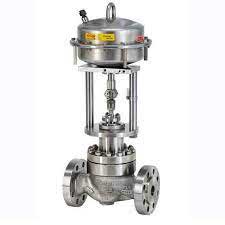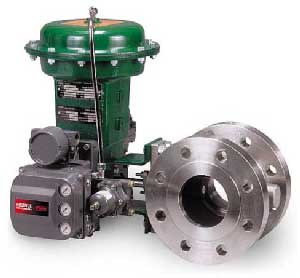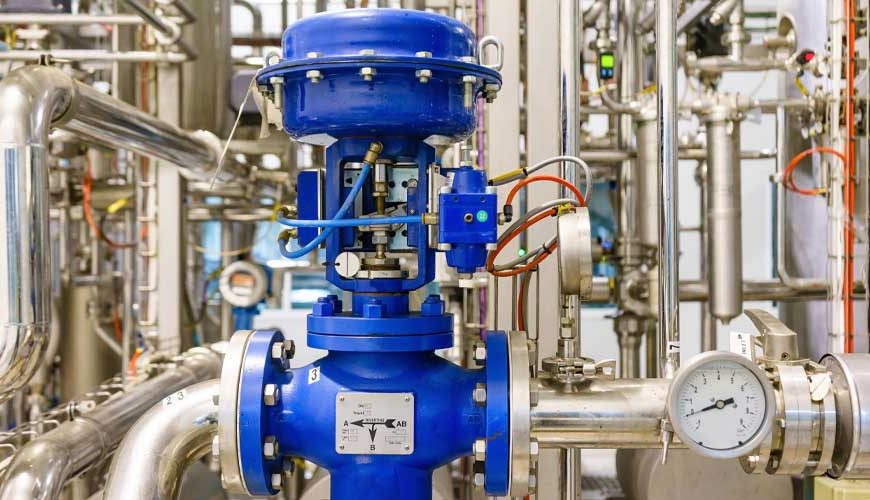Control valves are essential components in various industries for regulating fluid flow, pressure, temperature, and level. They play a crucial role in process control systems by adjusting the flow of fluids through a system based on signals received from controllers. Here’s an expert overview of the different types of control valves, their applications, advantages, and limitations:
1. Globe Valves
- Description: Globe valves have a spherical body and a linear motion to move a plug or disc against a stationary seat. They are named for their globe-like shape.
- Applications: Widely used for throttling applications where precise control of flow rate is required. Common in industries such as oil and gas, power generation, and chemical processing.
- Advantages: Excellent throttling capabilities, good shutoff, and ease of maintenance.
- Limitations: Higher pressure drop compared to other valve types, larger size, and heavier weight.
2. Ball Valves
- Description: Ball valves use a spherical disc (the ball) to control flow. The ball has a hole through the middle, and when the valve is in the open position, the hole is aligned with the flow path, allowing fluid to pass through.
- Applications: Suitable for applications requiring quick shutoff and high-pressure systems. Common in water treatment, oil and gas, and chemical industries.
- Advantages: Low pressure drop, fast operation, reliable sealing, and low leakage.
- Limitations: Not ideal for throttling applications, potential for wear on the seats, and limited to smaller sizes for precise control.
3. Butterfly Valves
- Description: Butterfly valves use a rotating disc to regulate flow. The disc is mounted on a rod, and rotating the rod turns the disc either parallel or perpendicular to the flow.
- Applications: Used in large-scale industrial applications such as water distribution, HVAC systems, and wastewater treatment.
- Advantages: Compact, lightweight, low cost, and quick operation.
- Limitations: Not suitable for high-pressure applications, limited throttling capabilities, and potential for leakage if not properly maintained.
4. Diaphragm Valves
- Description: Diaphragm valves use a flexible diaphragm to regulate flow. The diaphragm moves up and down to control the flow of fluid through the valve body.
- Applications: Commonly used in industries requiring high purity, such as pharmaceuticals, food and beverage, and water treatment.
- Advantages: Excellent for controlling the flow of corrosive or abrasive fluids, low risk of leakage, and easy to clean.
- Limitations: Limited to low-pressure applications, slower operation, and potential for diaphragm wear over time.
5. Needle Valves
- Description: Needle valves use a small, tapered needle-like plunger to precisely control flow. The needle moves in and out of a matching seat.
- Applications: Ideal for precise flow control in low-flow applications such as instrumentation and sampling systems.
- Advantages: High precision, good shutoff capabilities, and excellent for fine adjustments.
- Limitations: Not suitable for high-flow applications, higher pressure drop, and can be prone to clogging.
6. Plug Valves
- Description: Plug valves use a cylindrical or conical plug with a hole through the middle. Rotating the plug controls the flow through the valve.
- Applications: Used in industries such as oil and gas, chemical processing, and water treatment for on/off control and minimal throttling.
- Advantages: Simple design, reliable sealing, low maintenance, and fast operation.
- Limitations: Limited throttling capabilities, potential for wear on the plug and seat, and higher torque required for operation.
7. Pinch Valves
- Description: Pinch valves use a pinching mechanism to control flow by squeezing a flexible tube or hose.
- Applications: Suitable for applications involving abrasive, corrosive, or particulate-laden fluids. Common in mining, chemical, and wastewater industries.
- Advantages: Full bore design, minimal pressure drop, and excellent for handling slurries and granular materials.
- Limitations: Limited to low-pressure applications, potential for tube wear, and slower operation.
8. Control Valve Actuators
- Types:
- Pneumatic Actuators: Use compressed air to move the valve. Commonly used due to their simplicity and reliability.
- Electric Actuators: Use electric motors to drive the valve. Suitable for precise control and remote operation.
- Hydraulic Actuators: Use hydraulic fluid to move the valve. Ideal for high-force applications.
- Manual Actuators: Operated by hand, suitable for simple on/off control applications.
Factors Influencing the Choice of Control Valve
- Process Conditions: Consideration of pressure, temperature, flow rate, and the nature of the fluid (e.g., corrosive, abrasive, clean).
- Control Requirements: Desired precision of flow control, response time, and whether the application requires throttling or on/off control.
- Maintenance and Reliability: Ease of maintenance, reliability of the valve under process conditions, and expected lifecycle.
- Cost and Availability: Initial cost, availability of replacement parts, and overall cost of ownership.
Conclusion
Control valves are vital for managing fluid flow in various industrial processes. The selection of a specific type of control valve depends on multiple factors, including the nature of the fluid, the required precision of control, and the operational conditions. Understanding the characteristics, advantages, and limitations of each type of control valve helps in making informed decisions for efficient and reliable process control.








Leave A Reply